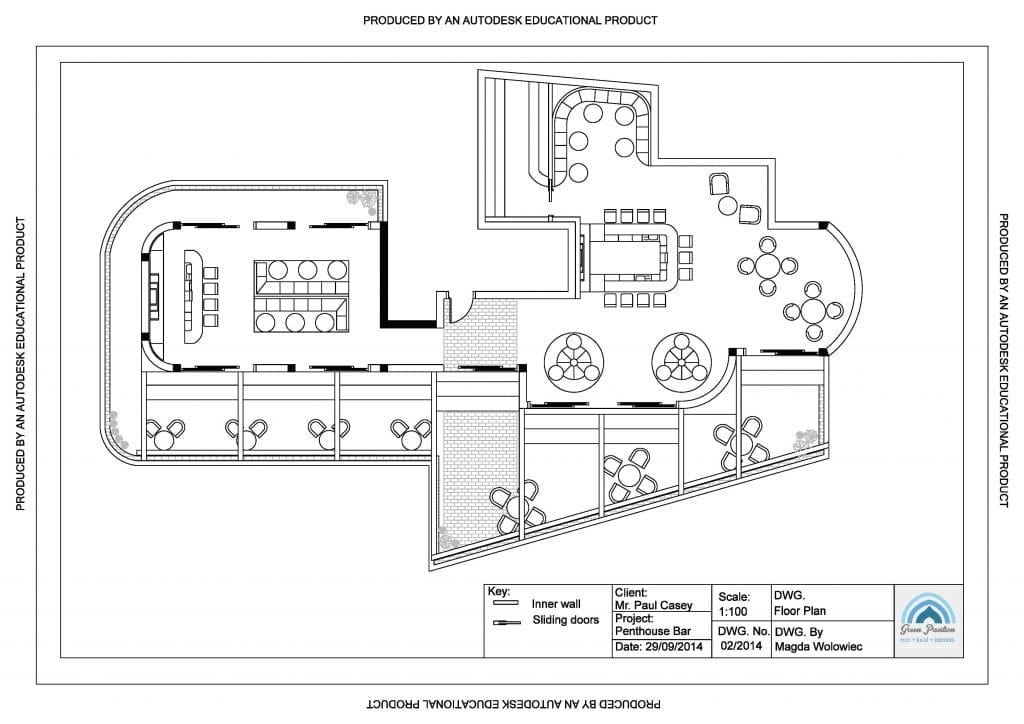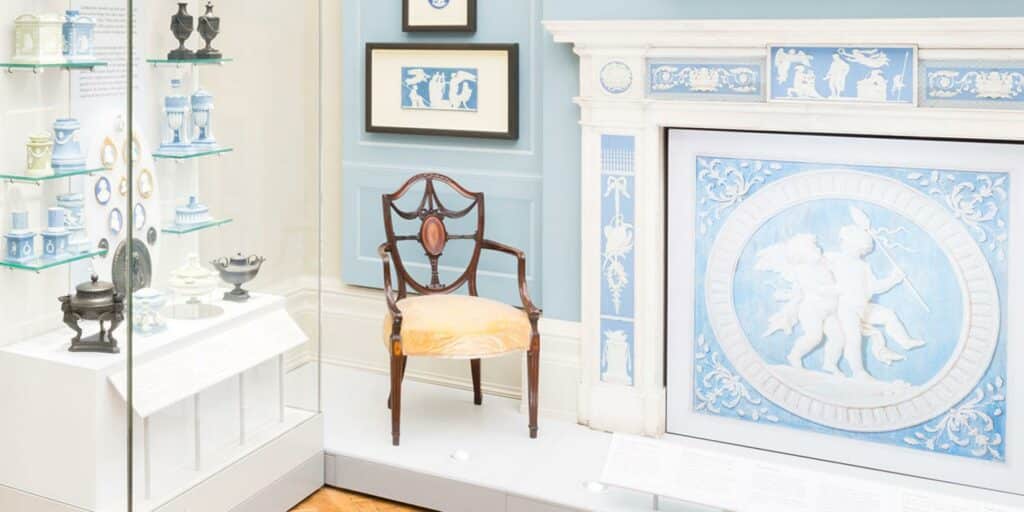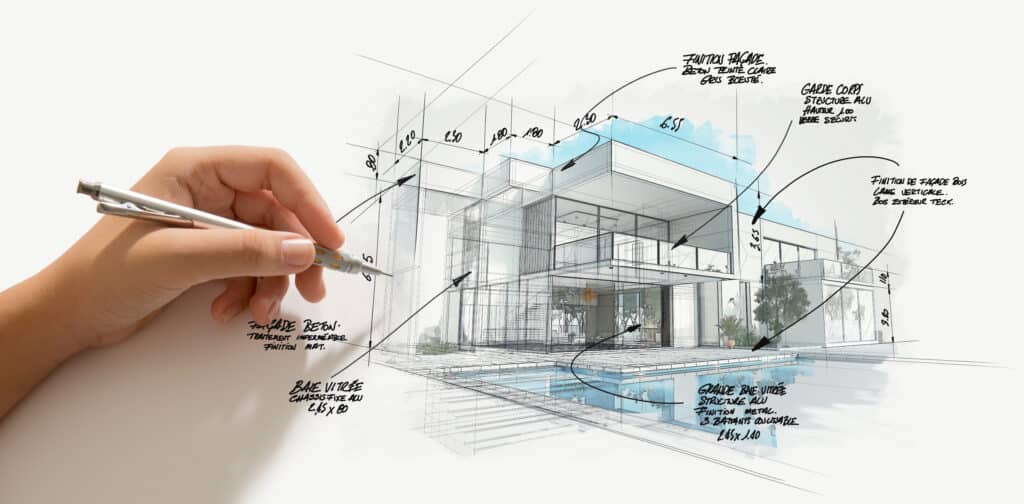For a considerable amount of time, the debate as to the difference between the terms ‘Interior Designer’ and ‘Architect’ has continued to gather momentum. Now with the addition of the term ‘Interior Architect’ coming into the conversation, being able to establish the correct terminology, to define the role and responsibilities, and to create an understanding of where one profession begins and the other ends, appears to have become even more blurred.
So, what are the differences between an Interior Designer, an Architect and an Interior Architect? In our latest blog post, we aim to find out and to also establish some criteria as to the roles and responsibilities associated with these professional roles.

The Perception of Interior Design
In 2015, Tom McCallum investigated this very question and one of the factors which he believes has led to the blurring of the lines between the professions is the improvement in education. He notes that the improvement of Interior Design education “has in turn increased the scope of the profession and led many Interior Designers to becoming more involved with architectural and technical aspects of interior design, and less with the decorative, soft furnishings side” (McCallum, 2015).

This could perhaps be a reflection of the perception of the role created by the media (think ‘Queer Eye’, ‘Dream Home Makeover’ etc) where the general public are introduced to a job role which appears easy, fun and something relatable. Who hasn’t designed their own home or elements of it? These TV programmes can give the impression that “anyone can be an Interior Designer”, which in reality, more often than not, is not the case, or certainly not in relation to the reality of the industry.

Interior Designer: The Profession
The job title of ‘Interior Designer’ or the term ‘Interior Design’ as a separate entity away from architecture, is not a new one. Interior Design developed from within Architecture and really began, as a distinct discipline, around the 14th – 16th centuries when the Renaissance gained prominence and spread across Europe.
However, Interior Design as a commercial enterprise really began to be defined following the Industrial Revolution in the 18th century. With the emergence of mass-produced goods and materials, the likes of Josiah Wedgwood were instrumental in developing artefacts representative of the emerging middle classes, and it was this new middle class who made it possible to earn a living as an Interior Designer.

It may surprise some readers to discover that the Interior Design profession is not something which was created, say only 20-30 years ago. However, with any industry, the job role itself has evolved over time. With the development in technology and wider accessibility to materials, products and furniture, clients are now able to have more involvement in the design of their spaces, rather than the interior designer having sole control (as was the case in the earlier days of the interior design profession).
Today’s Interior Designers are more than just someone to choose colour palettes, furniture and textiles in order to decorate a space. The modern-day Interior Designer is a much more complex job role; it is the only discipline within design that interacts with almost all other areas of the design industry (for example, Architects, Furniture Designers/Makers, Surface Pattern and Textile Designers, Product Designers, and Graphic Designers). The scope of the profession also sees the Interior Designer becoming involved with the more architectural and technical aspects and less with the decorative side. The decorative aesthetic is of course still a large part of an Interior Designer’s role and creativity in this area is key to success, however, it is not the sole element of the job.

Architect: The Profession
Unlike the job title ‘Interior Designer’, not just anybody can call themselves an ‘Architect’. The designation of the term ‘Architect’ is a protected and regulated profession, therefore an Architect must hold all the relevant Degree qualifications and be registered with the ARB (Architects Registration Board). The ARB was set up by Parliament to regulate architects in the UK and by registering with the ARB, allows you to be called an ‘Architect’. By registering, it tells your clients and members of the public that you are a fully trained and qualified professional. You are taking an active role in maintaining standards, and this benefits you, your profession and the public.
Also, many architects achieve ‘Chartered Architect’ status through the Royal Institute of British Architects (RIBA); although it is not a legal requirement to be registered with RIBA, many architects choose to be registered with RIBA as the institute is one of the most public and well-known architectural organisations in the UK.

So, what is the role of an Architect? Again, like an Interior Designer, the role of an Architect contains several different elements, as well as a number of responsibilities. They are not just solely responsible for the creation or redevelopment of a building and its structure; it is an innovative and future-shaping industry. An Architect will discuss ideas, requirements and the budget of a project, as well as assessing the needs of the building and its users. Alongside these responsibilities, an Architect will assess the impact on the local environment, work alongside numerous industry professionals such as engineers, construction specialists and surveyors, as well as working with local planning authorities to ensure all legal documents are supplied.
Although both essential to the success of a building, the collaboration between Architects and Interior Designers in the initial stages of a project, has in previous years, not been as close as one would expect. The design process was more of a production line; certain people had certain roles which would be completed in a sequential order. However, both Architects and Interior Designers have seen the value in a close collaboration, ensuring both parties can supply the most suitable designs for the client. The close collaboration has also ensured that Interior Designers feel more connected to a project, and can contribute to any problem-solving, if needs be.

Interior Architect: The Profession
In his blog post, Tom McCallum provides a sound explanation of what an Interior Architect actually is. He states that “Strictly speaking, interior architecture is a subject and not a profession”. As discussed above, the term ‘Architect’ is a protected job role and title, and therefore can only be designated if having studied the correct qualifications. Tom states further that “Interior Architecture as a term has come into use due to the increasing scope and responsibilities of Interior Designers in recent times due largely to improvements in design technology (CAD). Many degree courses now teach students about the structural technical elements of buildings, which has begun to blur the line between Architecture and Interior Design” (idesgni.co.uk, 2015).
However, further research undertaken to help try and define the term ‘Interior Architect’ has raised some concerns that there is no consistency in how this job role is defined and what an Interior Architect would be expected to do. What has been made clear is that the roles and responsibilities identified from numerous sources, is that the role of an Interior Architect is actually that expected of an Interior Designer. One blog post aimed to identity that an Interior Architect would be responsible for “understanding how the interior of a building can meet the need of the people who use them and how to implement structural alterations to accommodate changing needs” (idesigni.co.uk, 2015).
Certainly the first part of this statement could not be more representative of the role of an Interior Designer, and as discussed above, the job role of the Interior Designer has evolved in such a manner that an understanding of structural elements is now core to the education of new designers in this field, particularly when such a close collaboration with Architects is required.

It could also be considered that the term ‘Interior Architect’ is applied when there is a slight naivety and incorrect perception about the Interior Design industry and the role of an Interior Designer. The term ‘Interior Architect’ is neither one nor the other; it is simple, you cannot call yourself an ‘Architect’ without having undertaken distinct qualifications and registered with an appropriate regulatory body, therefore this title is not applicable as a profession.
Roles and responsibilities will always change and have to adapt to industry developments, as well as the demands of a client. Both roles of an Architect and Interior Designer are highly respected ones and offer many opportunities for creative output and industry collaboration, but it is important that anyone wanting to get in to the design industry, needs to be clear about what each role offers and what the expectations are. So what’s it to be; Architect or Interior Designer?
References:
Reference
McCallum, T. (2015) What’s the difference between interior architecture and interior design? [Online] February 9th 2015. Available from: http://www.idesigni.co.uk/blog/what-is-interior-architecture/. [Accessed: 28.09.16].
University of Hertfordshire. (2015) A closer look at Interior Architecture and Design [Online] n.d. Available from: http://idesigni.co.uk/courses/interior-architecture-and-design/a-closer-look-at-interior-architecture-and-design . [Accessed: 24.10.16].


8 responses
I am impressed with your site you made it a very nice. Thanks for sharing this post and I read your post it’s very useful for us and help us. We will keep touch with you Thank you all
Thanks for sharing the best posts they very useful and very help us. You made this site is awesome and also you giving us such a good information on this topics they amazing
Thanks for sharing the best posts they very nice and very useful to us. You made a good site it’s very interesting one
There are so many aspirants in this field. This will be motivation for those people. Well written. Thanks for sharing this.
Thanks for sharing the valuable blogs
Your site has given the best information. This is excellent information. It is amazing and wonderful to visit your site.
Interesting article, as someone with experience with European professionals, Interior Architecture is a controlled profession throughout Europe with 5 years education plus experience in many countries, and often controlled by the same boards as Architecture.
The UK seems to take a different route!
hi thanks for the tips that is a good tip for new customs thank you